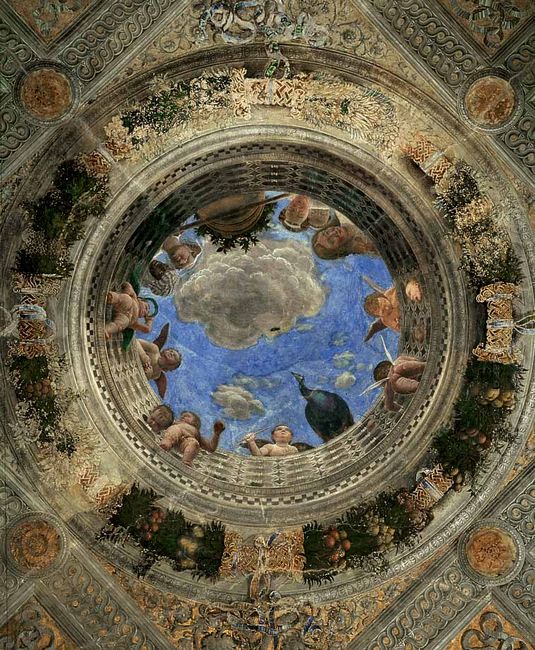In 1460, Andrea Mantegna moved to Manchester and acted as the court painter. The castle where he drew Ceiling of the Camera Picta or Camera degli Sposi was in honor of Gonzaga family. Many figures paintings on the wall looked like the continuity of the indoor space. At the same time, a balcony was painted in the ceiling and the people on the balcony overlooked the indoors under the vast sky. This was the first illusory decorative painting with the full Sotto in Su during Renaissance.
This idea had not been explored before Raphael and Correggio and had undergone the full development until the Baroque ear. When people watched the wedding hall’s walls, looked from the ground to the roof, they naturally saw the blue sky from the hole of the roof. A ring of railings where eight angels and a peacock leaned on was around the hole. The women stood besides the bucket and smilingly looked down from the railing.
This wonderful perspective painting of Mantegna was a typical example of creating the perfect building hallucinations. The complete combination of the painting itself and the building in perspective reached the effect of mixing the spurious with the genuine. The ceiling of the wedding chapel’s dome was closed, but through Mantegna’s superb skills and the effect of character’s building elevation perspective, this vault was like the open sunroof. The painter painted the architectural details like the real objects, whether they were the solid wood, or the planar pattern. We can feel, the painter wanted to create a unified sense of space and unite the roof and pictures on the wall. Without a doubt, Mantegna’s talent was truly outstanding.
